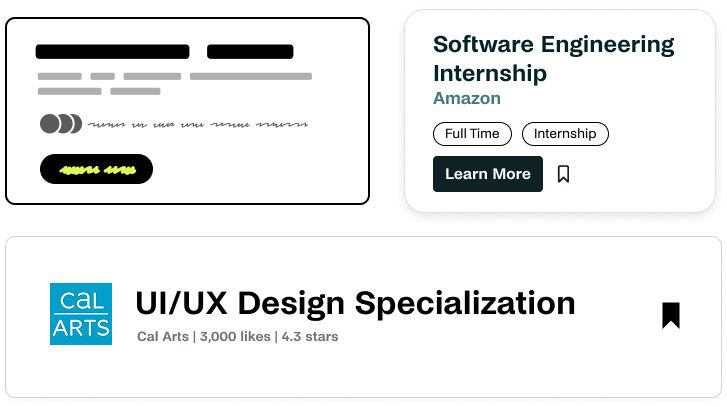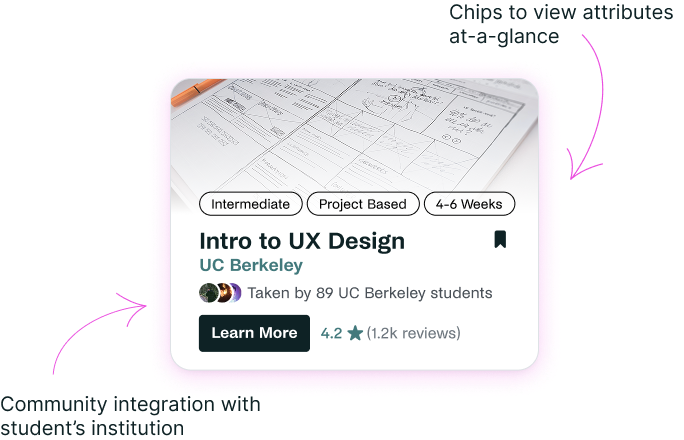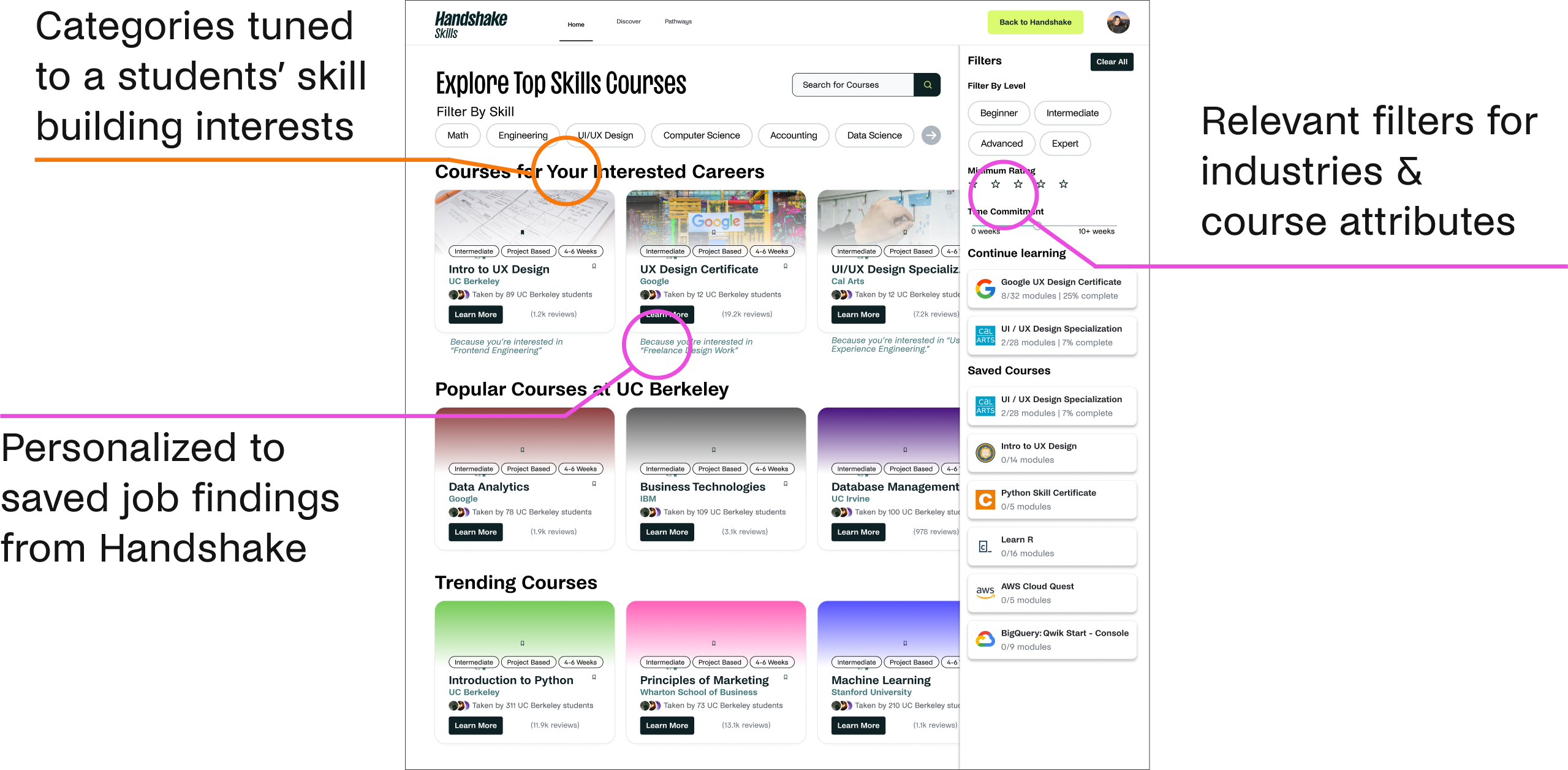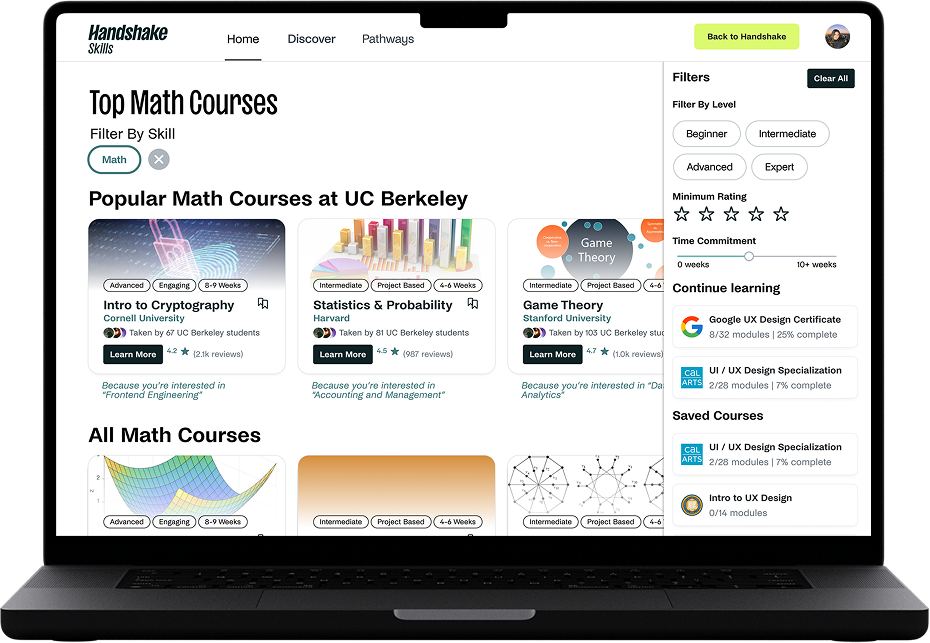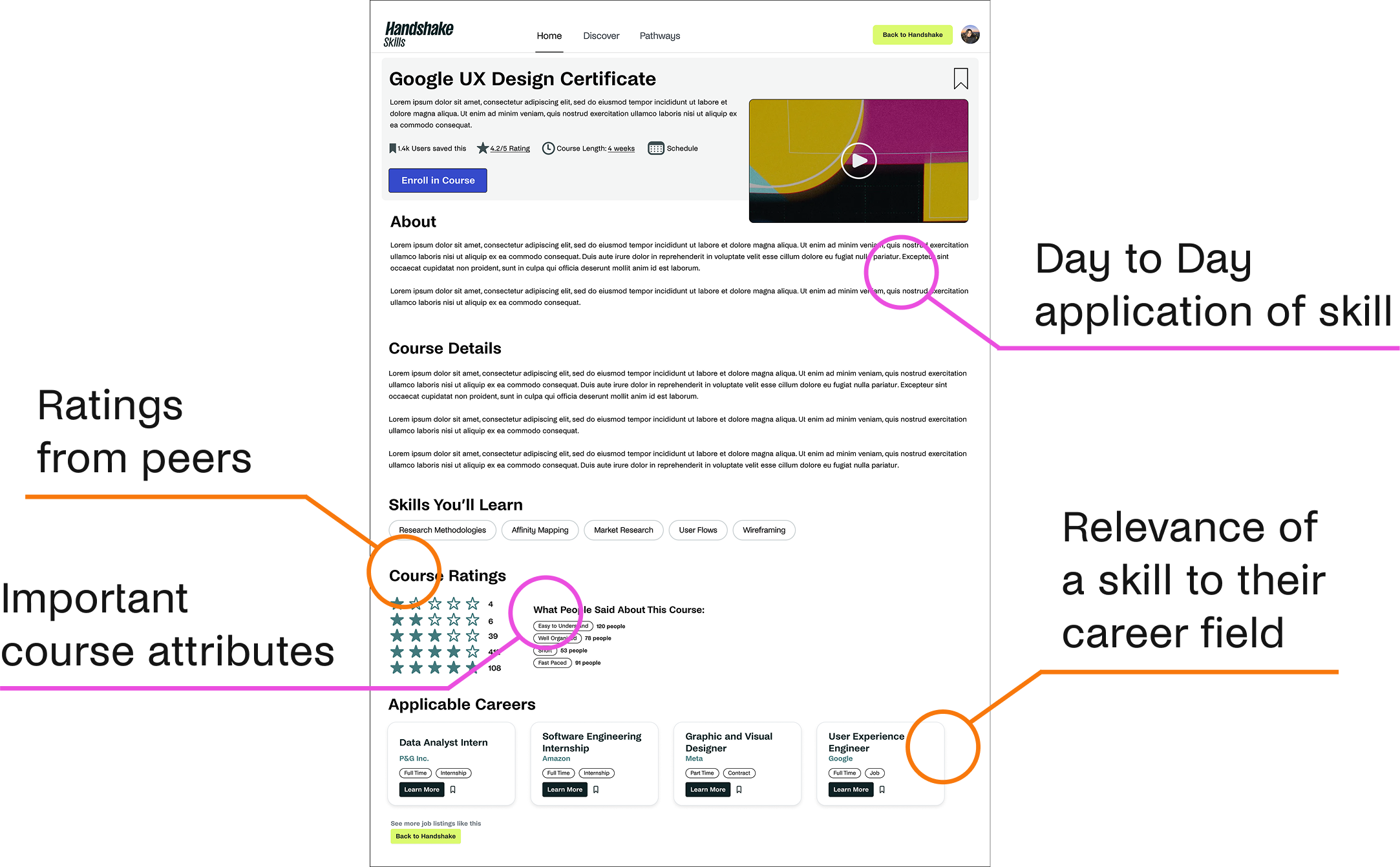
Misaligned priotities
University students are solid in their theoretical knowledge, but their technical skills are often not strong enough for recruiters.

Decision Fatigue
There are tons of online resources, but students don’t know how to find or choose between the various options.

Intimidation Factor
Students indicate that the career development process is intimidating - they don’t know which skills actually matter to recruiters.



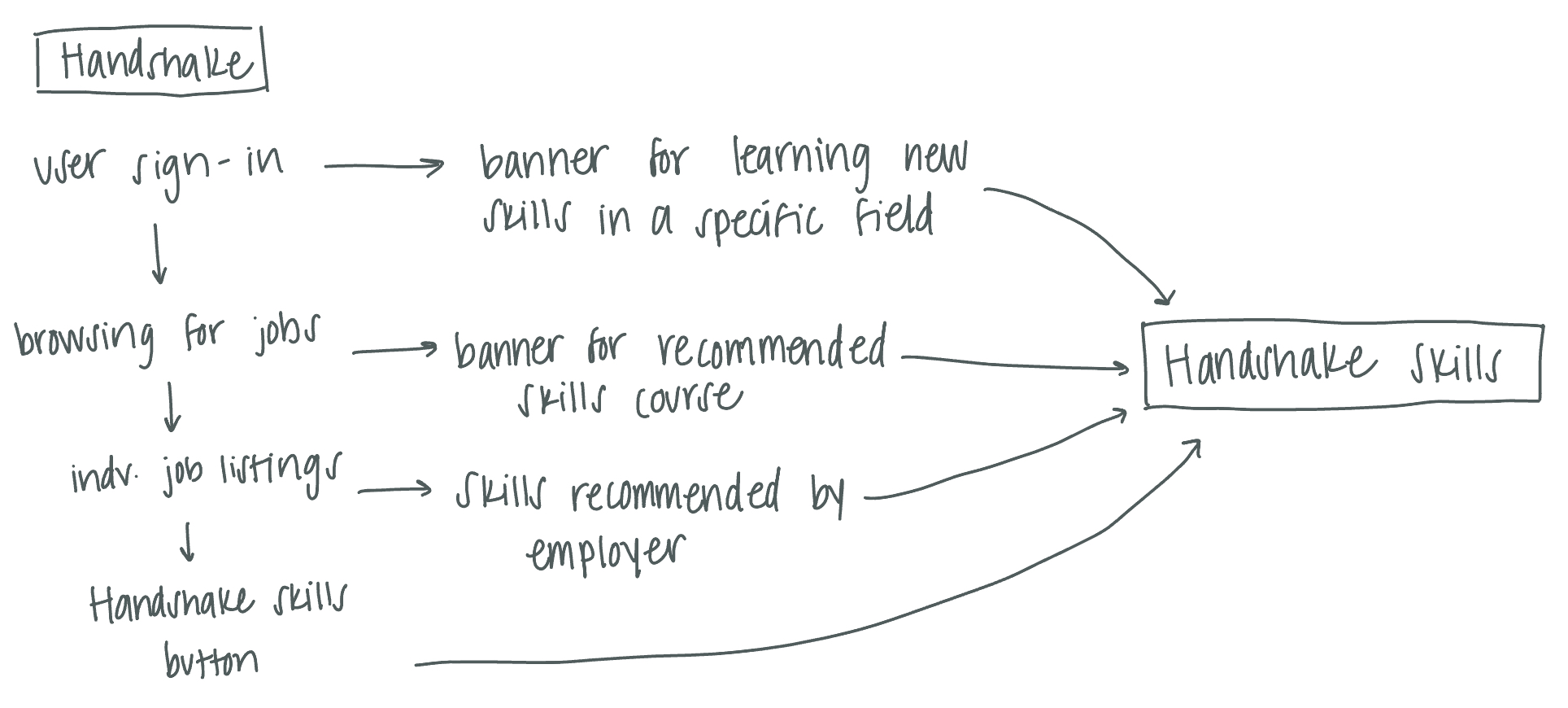



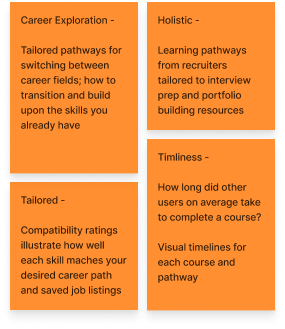

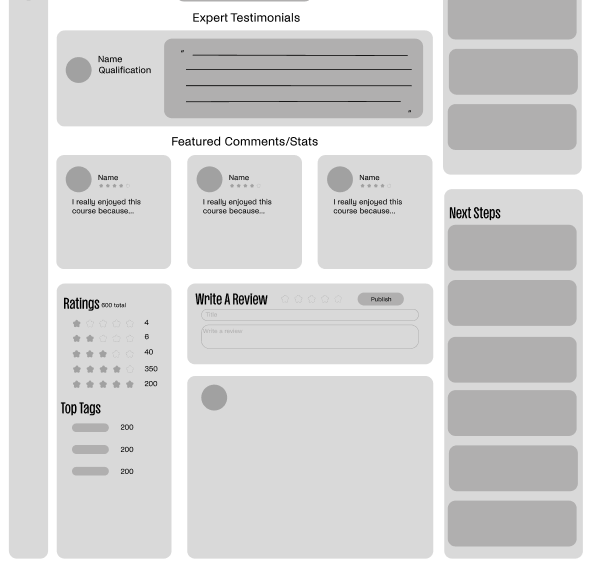



.png)




